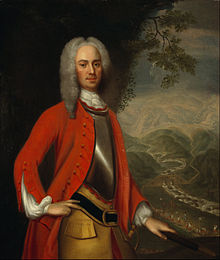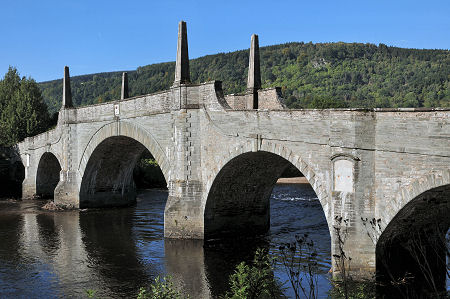Contrary to popular belief, the Battle of Culloden didn’t pitch Scotland against England. Both armies were made up of English, Scottish, Irish and Welsh soldiers. The British government army also had Hanoverian soldiers, and the Jacobites had two French regiments in their ranks; Royal Ecossais and Irish Piquets (which came from the Irish Brigade). Together they contained around 600 men but of these 600 soldiers, only about 15% were French.
The Royal Ecossais was made up of Scots sent into exile in France a few years earlier as a punishment; the Irish Piquets followed the same scenario, but with Irish men.

Let’s talk a bit about these two French regiments.
Firstly, their uniforms were different from the rest of the Jacobite army; the Royal Ecossais mostly wore a dark blue jacket, while the Irish Piquets wore a red coat. Knowing that the soldiers of the British army also wore red coats, there was a real worry of confusion. To avoid any misunderstanding, the Jacobites wore a white cockade on their hat or jacket (the white rose being the symbol of Jacobitism), whilst soldiers of the British government army wore a black one. Thus, it was easy to know who belonged to which camp.
The two French regiments turned out to be very useful and they helped the Jacobites to win the battle of Falkirk on January 16, 1746 by supporting the Highland Charge.
The Highland Charge was a Jacobite shock tactic of rushing at the enemy, weapons in the air. With the French regiments mostly on horseback, it was easy for them to assist the Highland Charge once the Jacobites had reached the enemy’s army.
But, at Culloden, the French regiments were in the second line; a line that the British government army attacked even before the first cannons were fired. Busy defending the rear of the Jacobite army, the French regiments were unable to support the Highland Charge. Nevertheless, they managed to reach the battlefield as the Jacobites were forced to retreat and attacked the British cavalry, allowing many Jacobites to escape from the battlefield.

After the Battle of Culloden, thousands of Jacobites, or presumed Jacobites, were arrested and thrown into prison. They were treated miserably: no food, untreated wounds, non-existent hygiene to name but a few. Many died before their trials, others were executed or sentenced to several years of servitude, and some were forgiven.
On the other hand, the soldiers of the French regiments, being subjects of King Louis XV, were treated as prisoners of war. They received the necessary care for their wounds, were given food and had adequate hygiene. Instead of being executed or banished, they were exchanged for British prisoners of war who were imprisoned in France.
Today on the battlefield, behind the blue flags line (representing the first line of the Jacobite army), you can see a stone, erected in 1994 by the White Cockade Society, commemorating the Scots Royal regiment who fought alongside the Jacobites and beside this is a stone commemorating the Irish Piquets.
We hope you enjoyed this post. As always please like, tweet, share and comment.
All the best, The Culloden Team

